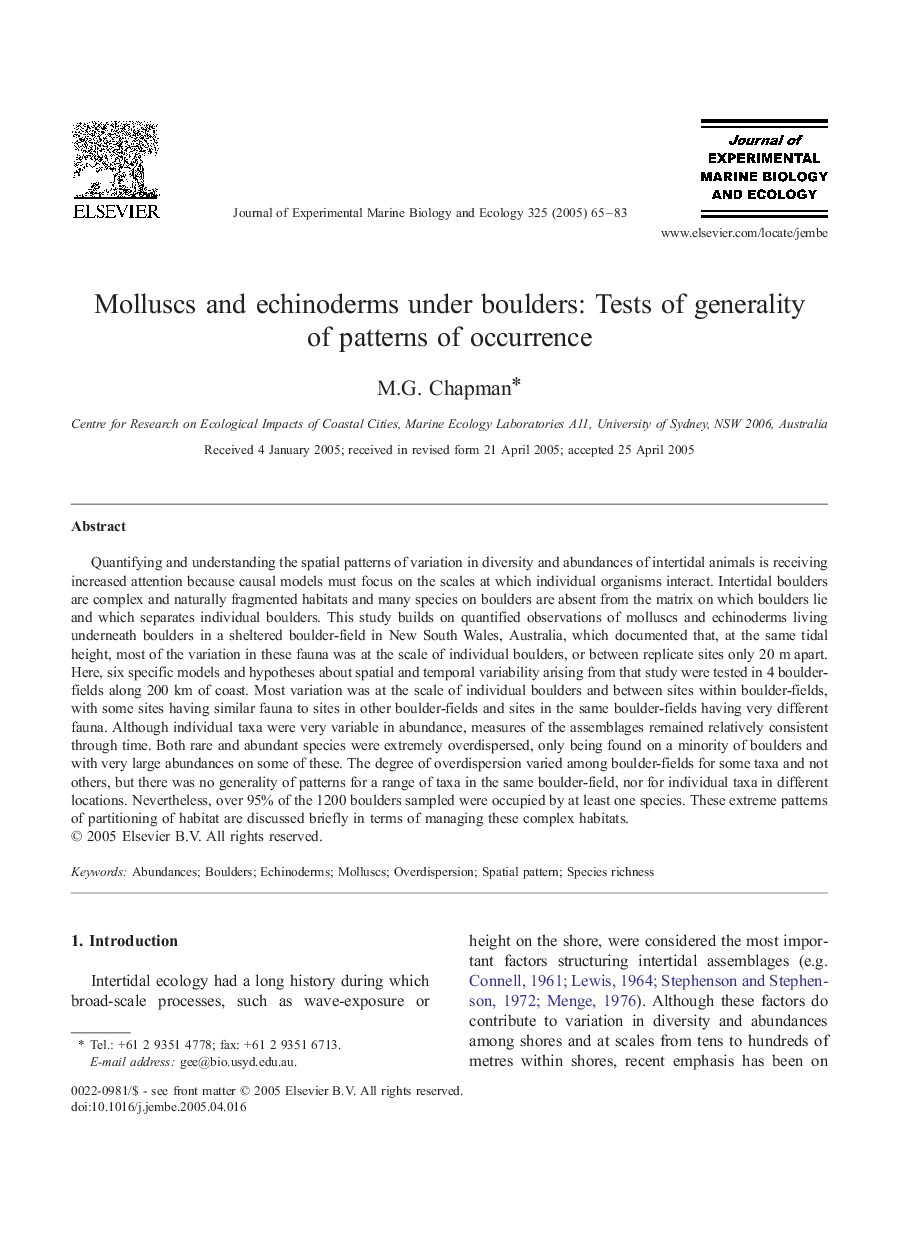| Article ID | Journal | Published Year | Pages | File Type |
|---|---|---|---|---|
| 9448690 | Journal of Experimental Marine Biology and Ecology | 2005 | 19 Pages |
Abstract
Quantifying and understanding the spatial patterns of variation in diversity and abundances of intertidal animals is receiving increased attention because causal models must focus on the scales at which individual organisms interact. Intertidal boulders are complex and naturally fragmented habitats and many species on boulders are absent from the matrix on which boulders lie and which separates individual boulders. This study builds on quantified observations of molluscs and echinoderms living underneath boulders in a sheltered boulder-field in New South Wales, Australia, which documented that, at the same tidal height, most of the variation in these fauna was at the scale of individual boulders, or between replicate sites only 20 m apart. Here, six specific models and hypotheses about spatial and temporal variability arising from that study were tested in 4 boulder-fields along 200 km of coast. Most variation was at the scale of individual boulders and between sites within boulder-fields, with some sites having similar fauna to sites in other boulder-fields and sites in the same boulder-fields having very different fauna. Although individual taxa were very variable in abundance, measures of the assemblages remained relatively consistent through time. Both rare and abundant species were extremely overdispersed, only being found on a minority of boulders and with very large abundances on some of these. The degree of overdispersion varied among boulder-fields for some taxa and not others, but there was no generality of patterns for a range of taxa in the same boulder-field, nor for individual taxa in different locations. Nevertheless, over 95% of the 1200 boulders sampled were occupied by at least one species. These extreme patterns of partitioning of habitat are discussed briefly in terms of managing these complex habitats.
Related Topics
Life Sciences
Agricultural and Biological Sciences
Aquatic Science
Authors
M.G. Chapman,
